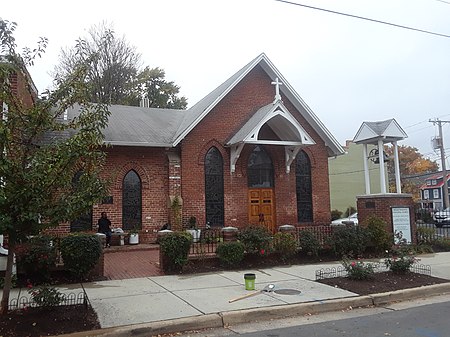Meade Memorial Episcopal Church
African-American history of VirginiaChurches completed in 1873Churches in Alexandria, Virginia

Meade Memorial Episcopal Church is a predominantly Black Episcopal Church in Old Town Alexandria, Virginia. Founded in 1870, the church today is supported by a congregation that includes descendants of the original founders of this parish. Meade Memorial belongs to the Episcopal Diocese of Virginia, whose members continue to serve the community and the Episcopal Church by participating in regional and Diocesan activities. The church building itself was moved in 1873 from the northern edge of Alexandria to the more centrally located Black neighborhood of Uptown. At this time it was designated a "colored Episcopal chapel".
Excerpt from the Wikipedia article Meade Memorial Episcopal Church (License: CC BY-SA 3.0, Authors, Images).Meade Memorial Episcopal Church
North Alfred Street, Alexandria
Geographical coordinates (GPS) Address Nearby Places Show on map
Geographical coordinates (GPS)
| Latitude | Longitude |
|---|---|
| N 38.8085 ° | E -77.0488 ° |
Address
North Alfred Street 322
22314 Alexandria
Virginia, United States
Open on Google Maps







